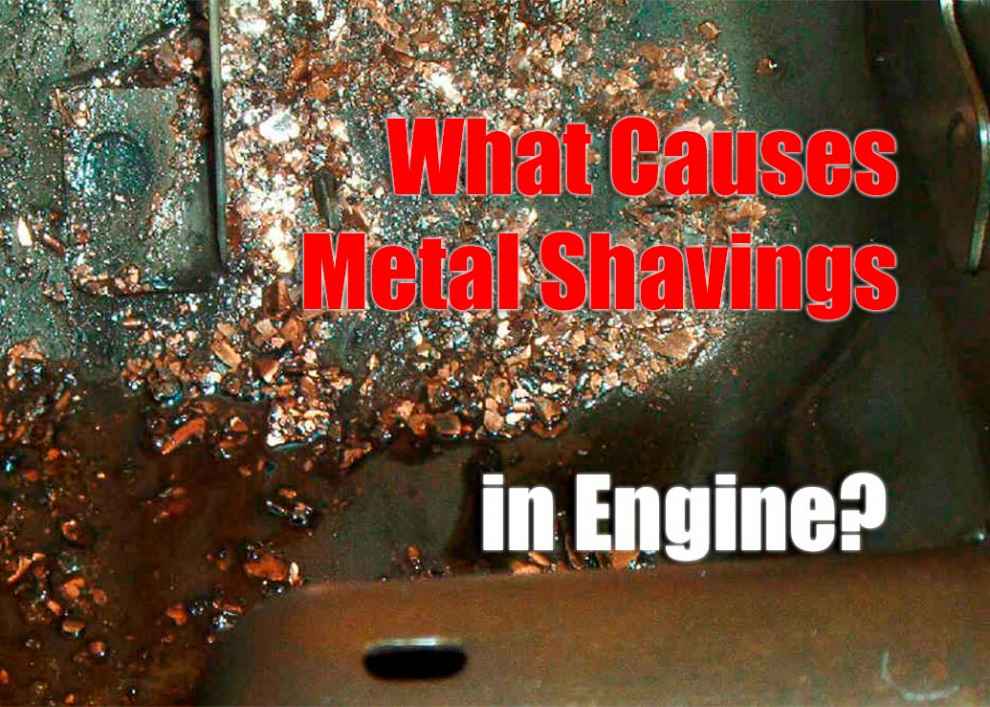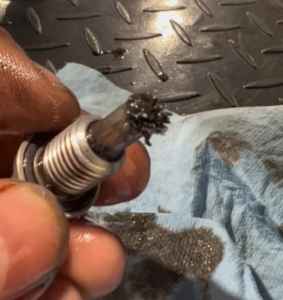Metal shavings in an engine can be a sign of a serious problem, so it’s important to know what potential causes are and how to diagnose and fix them. The presence of metal shavings in any engine is not normal and should be taken seriously. If you find metal shavings in your car’s engine, it is important to figure out the cause and take steps to address the problem before it leads to even bigger trouble. In this article, we’ll look at the common causes of metal shavings in an engine, how to diagnose a problem with them, and how to fix them.
What Causes Metal Shavings in Engine?
There are several common causes of metal shavings in a car’s engine, including:
Mechanical wear and tear: Over time, metal components in the engine may become worn down due to regular use and friction, resulting in fine metal particles breaking off and entering the oil or other fluids. This type of wear often occurs with older engines.
- Poorly connected parts: Loose or improperly connected parts can cause metal parts to rub against each other, releasing metallic particles into the engine oil or other fluid.
- Contaminated oil: If the engine oil is contaminated with dirt, debris, rust, or other particles, it can cause metal particles to be suspended in the oil. This contamination can also occur if old or poor-quality lubricants are used.
- Foreign objects entering the system: If there is a breach anywhere along the fuel line or intake system, it could allow foreign objects, such as rocks or dirt, to enter and damage components inside the engine resulting in small pieces of metal being released into the system.
How to Diagnose a Problem with Metal Shavings in Engine
The first step in diagnosing a problem with metal shavings in an engine is to check the oil or other fluids for signs of contamination. If there are metal particles visible, it is likely that one of the causes mentioned above is responsible and further investigation should be done. Inspecting all engine components, including fuel lines, intake systems, and other details, for any signs of wear or loose connections is essential. A visual inspection can also help identify foreign objects that may have entered the system. Finally, it is important to check your engine’s oil filter as this can often provide clues as to what type of contaminant has been found and how much debris has accumulated inside the filter itself. If you’ve addressed the metal shavings issue, it might be beneficial to give your engine a thorough clean. How to Steam Clean Engine is a valuable guide to consider for this purpose. Also read up on related topics to ensure optimal engine health and performance.
How to Fix Problems Causing Metal Shavings in Engine
Once you have diagnosed the cause of metal shavings in your car’s engine, you must take steps to fix it. Mechanical wear and tear should be addressed by replacing worn parts with new ones and ensuring they are correctly connected so they do not rub against each other again. Contaminated oil or fluids should be changed out with fresh ones that meet manufacturer specifications for your vehicle type, and make sure any foreign objects are removed from the system before refilling them with clean fluid or oil. Finally, if you suspect a breach somewhere along the fuel line or intake system, this must be sealed off so no more foreign objects can enter the system again, causing further damage down the road.
Conclusion
Metal shavings in an engine can be a sign of a serious problem that must be taken seriously and addressed as soon as possible. The causes of metal shavings in an engine can vary from mechanical wear and tear to contamination or foreign objects entering the system, but all should be taken seriously and addressed quickly. It is essential to diagnose the problem first by inspecting all components, checking the oil or other fluids, and looking at the filter for any signs of debris. Once you have identified the cause, steps should be taken to fix it, such as replacing worn parts or sealing off any fuel lines or intake systems breaches. These steps will help keep your vehicle running safely and smoothly for years.

 Mechanical wear and tear: Over time, metal components in the engine may become worn down due to regular use and friction, resulting in fine metal particles breaking off and entering the oil or other fluids. This type of wear often occurs with older engines.
Mechanical wear and tear: Over time, metal components in the engine may become worn down due to regular use and friction, resulting in fine metal particles breaking off and entering the oil or other fluids. This type of wear often occurs with older engines.
Add Comment